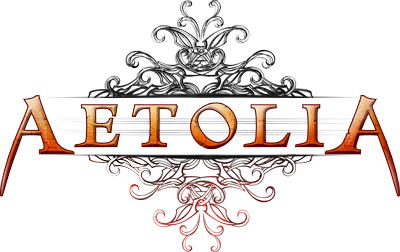19.11.1 Style Guidelines
There may be a time when you have need to describe a room (e.g in your estate), a denizen (e.g an artifact pet), or an item (e.g a customisation) in the world. In order to maintain a high standard of writing and assist with developing high quality descriptions, below are some of the conventions and guidelines for doing so.
A Short Note on Crafting Skills
--------------------------------
While we do not insist on or hold crafting skill designs to the specifics laid out here, it is still worth reading this over!
General Rules
--------------
- Use UK or US English consistently throughout. Never mix the two.
- Always use complete sentence, proper grammar, and correct punctuation. Avoid sentence fragments.
- Use single spaces between sentences.
- Maintain a consistent tense, most descriptions will always be in the present tense.
- Stick to a formal voice. Contractions are informal and should not be used in formal writing. e.g "are not", instead of "aren't" or such.
- Always attempt to avoid passive voice. "Has been" is a great example of passive tone, and is a term that takes up valuable space which could otherwise be filled with dynamic, interesting verbs!
- It is almost never appropriate to refer to the onlooker in a description ("you"). Exceptions to this are in denizen reactions, attacks, or any other active effect which involves something happening in the moment.
Common Mistakes
---------------
- Semicolons should only ever be used to conjoin two clauses that could otherwise stand alone as independent sentences. Expounding on a prior clause should be done with a colon or emdash (-).
- "Then" is never used when making comparisons, it is always "than" (more than, less than, better than, and so on).
- Ellipses should always be three dots then a space.
Room Descriptions
-----------------
When writing room descriptions, keep in mind the following:
a) There are two parts: a room title (the first letter of which is always capitalised), and a verbose description, which is a paragraph that describes further details. It should be a minimum of 6 to 8 lines when viewed in Aetolia's default screenwidth (80 characters). More than that is perfectly fine, though extremely lengthy descriptions (15+ lines) become much more difficult to read and are probably overdoing it.
b) Do not describe actions in descriptions. Especially do not force actions, or interpretations, on the viewer. It makes no sense to say "You tremble as you enter the room" in a description. It's not reasonable for someone to experience that action every time they enter the room.
c) Related to the above, rooms should primarily be a static picture of the landscape and permanent features. Avoid references to ambient denizen presence such as flocks of birds, these are better served as atmospheric messages.
d) Do not describe exits, as in: "You see exits to the north, east, and south." Aetolia will take care of that. You can, of course, describe what people in the location may be able to see in those directions, but the actual line listing the exits shouldn't be included. Also, do not include descriptions for items or denizens that will be in the room.
e) Describe only what someone could reasonably sense in the room. Do not describe the history of the room, or items in the room, or any other information that someone walking in for the first time could not easily know. An example of this might be "The fish sold in this market are cursed by a sorcerer." That is expositional and not descriptive, and is something that can't be gleaned by simply looking at the location.
f) Some additional factors to consider when designing rooms are the following:
* Eye-level (trees, crevasse walls, mountains, etc)
* Ground cover (lichen, grass, gravel, debris, etc)
* Signs of Life (fauna, animal burrows, tracks, trails, bones from a meal,
etc)
* Civilization (hunter camp, city in view, smell of smoke)
* Environment (weather/atmosphere)
* Landmarks (smaller ones like fallen trees/something distinct, and larger ones that reference where you are in relation to the area as a whole)
Item Descriptions
-----------------
When writing item descriptions, keep in mind the following:
a) There are three parts to an item's description.
APPEARANCE - a wooden bucket
DROPPED - A wooden bucket sits here in its own puddle.
EXAMINED - Low and wide for stability, this wooden bucket is admirably
adapted to its task. It has two carved handles with metal
reinforcement along the top edge. The upper lip curves
inwards, overhanging the centre in order to keep some of the
more lively contents from seeking their freedom.
b) Length of the appearance is limited to 50 characters, and should never start with a capital letter unless it is a proper noun.
c) The dropped description must begin with a capital letter and must end with a period. It is limited to around 80 characters. This should be a full sentence.
d) Examined should be a minimum of 3 lines when viewed in Aetolia's default screenwidth (80 characters), though 6-8 is average. More than that is perfectly fine, though extremely lengthy descriptions (15+ lines) are probably overdoing it.
e) Do not describe actions or force actions on the viewer. Writing "This frosted cake looks so tasty that you cannot resist sticking your finger in the frosting and licking it off your finger" does not work, because it is not a reasonable reaction for every person to have.
f) Exclude the 2nd person pronoun (you/your) from descriptions as much as possible.
g) Avoid subjectivity. This relates to forced actions but also includes non-descriptive adjectives such as "amazing", "lovely", or "fantastic". Not everyone will share that opinion, and it does not help form a picture.
Denizen Descriptions
--------------------
All the guidelines for item descriptions apply to denizen descriptions. There
are four additional parts to a denizen's description.
APPEARANCE - a woolly lamb
DROPPED - A woolly lamb gazes shyly at her surroundings.
EXAMINED - Soft, curly wool the colour of creamy milk comprises the
fleece of this shy little lamb. Her large brown eyes bear lids
with a fringe of soft white lashes, and she wears a smile
beneath her pink nose. Long, almond-shaped ears stick out
comically to the sides, perked forward to catch any sound. In
contrast to her full, fluffy fleece, her legs are slender and
smooth, tipped with hooves of soft grey.
ENTRY - Stepping timidly in from the $DIR is a woolly lamb.
LEAVE - A woolly lamb ducks her head and steps away to the $DIR.
DEATH - Bloodstained fleece marks the corpse of a little lamb.
DEATHSIGHT - This is what shows on deathsight when the denizen kills a
player.
- $me bleats as $me_his foe, $who, is vanquished.
- The above would show: A woolly lamb bleats as her foe, Ictinus, is vanquished.
Additional Tips
---------------
The following are not concrete rules but will nevertheless assist in writing well for Aetolia, particularly if you are using this help file as a precursor to a mortal builder or Celani application.
a) Be specific and avoid vagueness. Why use "tree" when "red maple" is much more interesting? A dull description can easily be spruced up with specific details about component parts. A boring "pillar" can become "a slender pillar of white marble" and be that much more engaging to read in the process.
b) Research if you are not sure. Would the foliage you're describing grow in the climate you're working in? Would the inhabitants be tanned or pale? Can certain fauna even survive in the environment in question? You don't need to be an expert on biomes or architecture, but judicious use of Google to avoid major mistakes is advised.
c) Vary sentence length and structure. Pacing is an important part of producing high quality descriptions, and multiple successive long sentences are a quick way to lose the reader's interest, as is starting every sentence in the same way. Break multiple long sentences into shorter segments, combine shorter sentences into more elaborate statements. There is no hard formula for success here, but variety is essential.
d) Utilise dynamic verbs. Verbs are the workhorse of a sentence and are what really bring it to life in an engaging, evocative way. For example:
WEAK: There is a tree in the field. Green leaves are growing on it. Ring of stones have been arranged around it.
DYNAMIC: A towering elm grows at the heart of the field, its branches laden with a profusion of vibrant green leaves. Ancient stones encircle the base of the tree's trunk, arranged in complex formations.
e) Consider all of the senses. This can be an easy way to alleviate writer's block, particularly when writing room descriptions. It's not appropriate to use all of the senses in every description, but branching out from only sight into sound, smell, taste (rarely appropriate except for food and drink, but has a place), hearing, and touch can allow for a lot of creative expression. Psychic impressions can occasionally make sense (for example a sense of foreboding or ominous silence), but should be used sparingly.
f) Avoid non-committal terminology such as "seems to", "looks like", or "appears to be" where possible. Metaphor and simile are absolutely welcome, but these terms in a vacuum are bland and weaken the impact of a sentence. Does that Gnome "seem to" be smiling, or is he actually smiling? If a man is so wizened and ancient-looking that he "appears to be" the eldest of his people, then the chances are he probably is.
g) Don't overuse qualifiers, like "almost" or "nearly" or "slightly." They're fine in moderation.
i) Repetition (particularly of nouns, verbs, and adjectives) is the single most effective way to make your writing jarring and dull. Never use the same word twice in a single description if it can be avoided. Naturally, this doesn't include contractions or necessary terms like "the" or "as", nor does it preclude use of the same term across various facets of a description (dropped and examined for instance) For example:
WEAK: This willow tree is the largest of its kind. It is an impressive tree, larger than any other. Its branches are long, and slender, weeping under the weight of many leaves. Knots spiral all over the branches, lending the tree a gnarled, ancient appearance.
DYNAMIC: This immense willow tree dwarfs all others of its kind. Mighty and impressive, it stands as a towering behemoth, its enormous bole rising several feet above any other in the woodland realm. Its branches are long, and slender, weeping under the weight of countless leaves. Knots spiral and writhe across each and every bough, lending this ancient sentinel a gnarled, rugged appearance.
